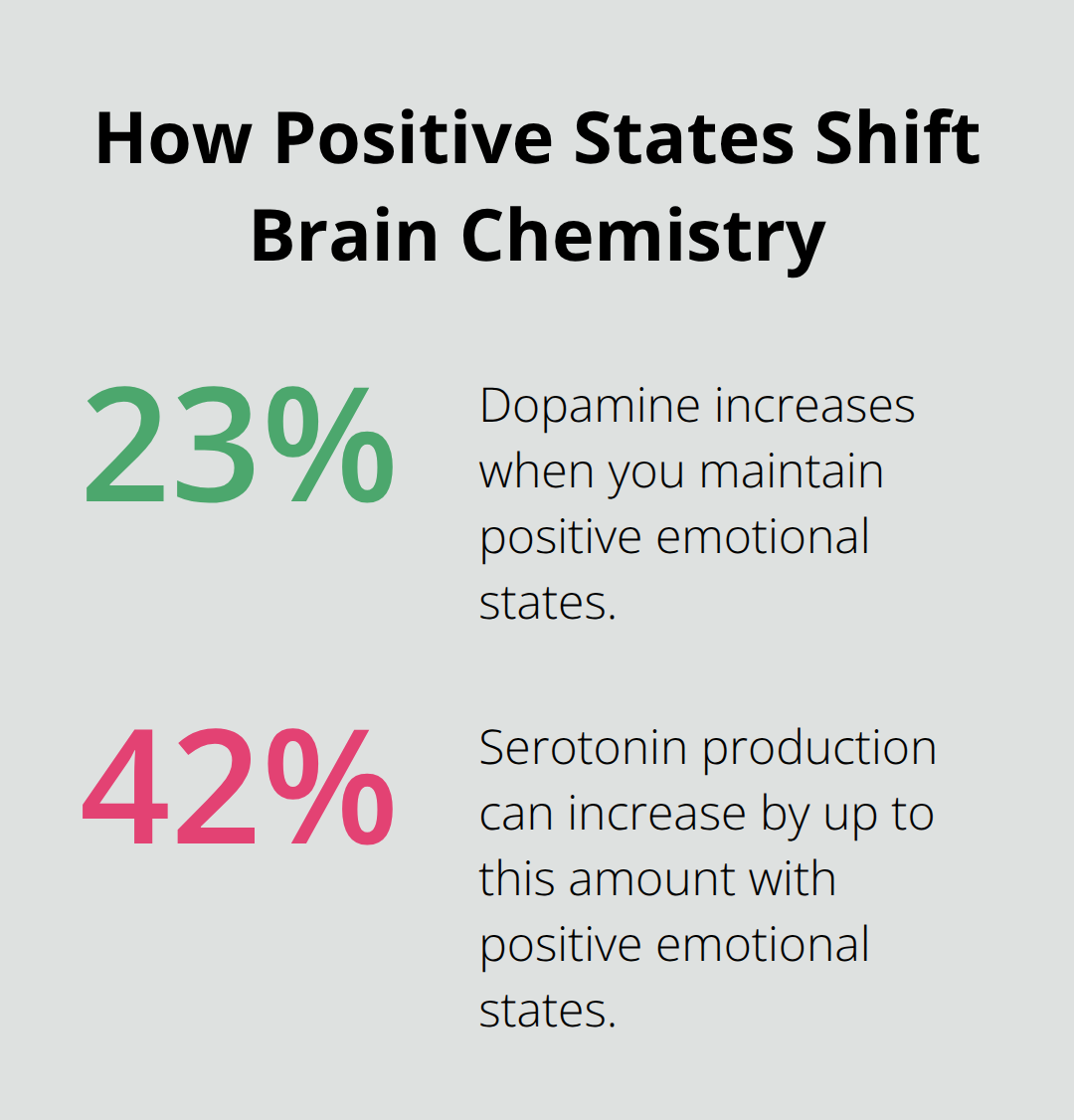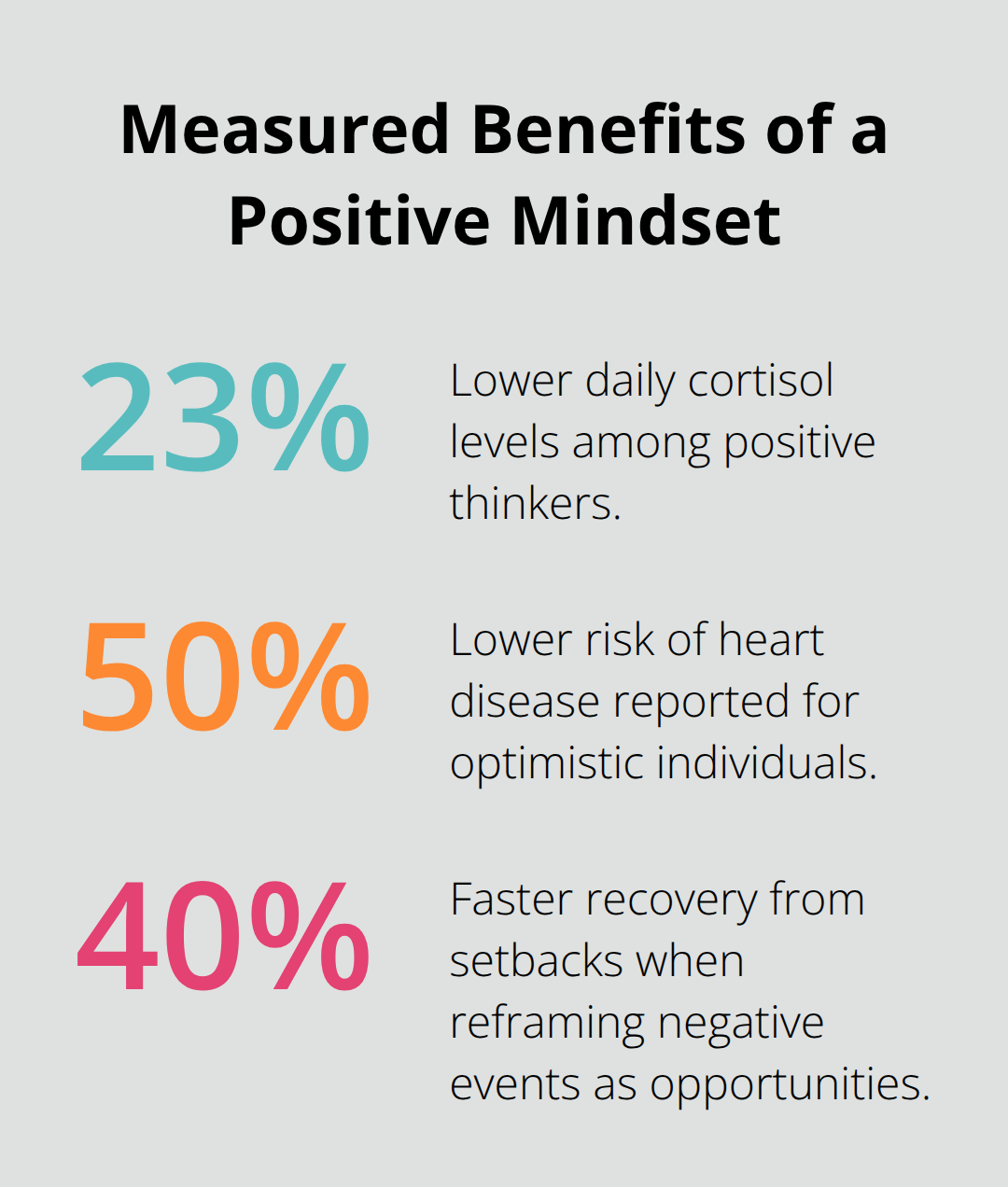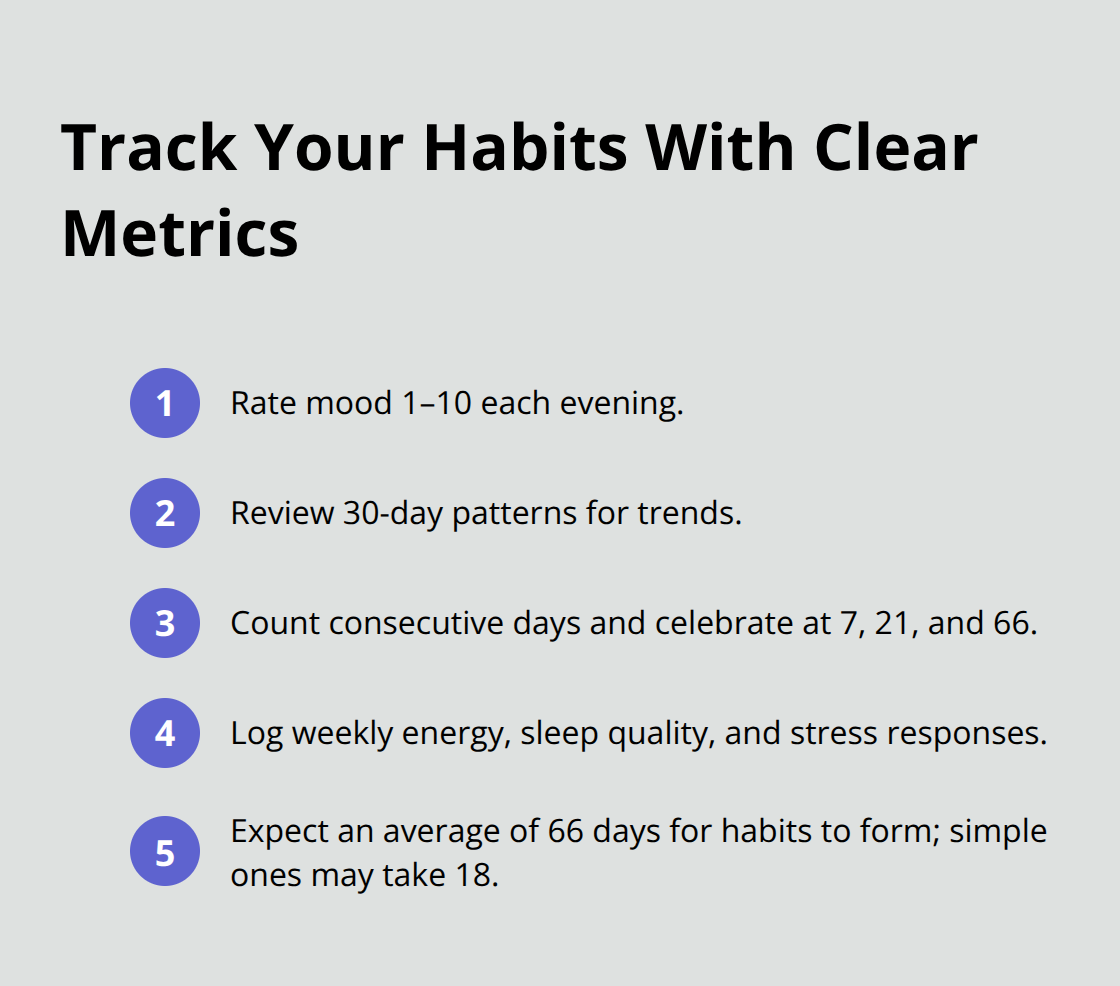Your positivity frequency shapes every moment of your day. Research shows that people who maintain higher positive emotional states experience 31% better productivity and 37% improved health outcomes.
We at Global Positive News Network have compiled proven strategies that transform your mental landscape. These techniques work because they target the specific brain patterns that generate lasting happiness.
How Positivity Frequency Transforms Your Brain
Positivity frequency acts as your brain’s operating system for happiness. When you maintain positive emotional states, your brain produces 23% more dopamine and increases serotonin production by up to 42%, according to research from Harvard Medical School.

The University of California found that people with higher positivity frequencies show increased activity in the prefrontal cortex, the brain region responsible for decision-making and emotional regulation. This neurological shift creates a cascade effect: better mood leads to clearer thinking, which generates more positive experiences and reinforces the cycle.
Your Brain Rewires Itself Through Positive Focus
Neuroplasticity research from Stanford University demonstrates that brain changes following intensive training are less pronounced after shorter periods and require longer time for significant structural modifications. The hippocampus, responsible for memory formation, develops denser gray matter when you expose it to regular positive emotions. People who practice daily gratitude show 25% larger hippocampal volume compared to those who don’t (as measured by MRI scans). This brain transformation improves memory retention by 15% and reduces anxiety symptoms by 28%. The key lies in repetition: your brain strengthens neural pathways you use most frequently, which makes positivity your default mental state.
Daily Mindset Shifts Create Measurable Life Changes
Your mindset directly impacts cortisol levels, with positive thinkers showing 23% lower stress hormone production throughout the day. Research from the Mayo Clinic reveals that optimistic individuals live 11-15% longer and have 50% lower risk of heart disease. People who consciously shift their focus to positive aspects of situations report 31% higher job satisfaction and 37% better relationship quality.

The American Psychological Association found that individuals who reframe negative events as opportunities bounce back from setbacks 40% faster than those who don’t practice cognitive reframes.
Physical Changes You Can Measure
Positive emotions trigger measurable changes in your body’s chemistry and structure. Studies show that people who maintain higher positivity frequencies have 19% lower inflammation markers and 25% stronger immune responses. Your heart rate variability improves by 32% when you practice positive emotional states regularly. These physical adaptations happen because positive emotions activate the parasympathetic nervous system, which promotes healing and recovery. The transformation extends beyond mental benefits to create tangible health improvements you can track through medical tests.
These brain and body changes set the foundation for practical techniques that amplify your positivity frequency even further.
What Specific Actions Raise Your Positivity Frequency
Transform your mental state through evidence-based practices that deliver measurable results. Research suggests that gratitude may be associated with many benefits for individuals, including better physical and psychological health, increased happiness. Focus on details rather than generalizations – instead of writing “grateful for family,” specify “grateful that my sister called to check on my presentation yesterday.” This precision activates different neural pathways and strengthens memory formation. Keep your gratitude journal next to your bed and write entries immediately upon waking, when your brain shows highest neuroplasticity. People who practice this targeted gratitude approach show improved emotional well-being and better sleep quality.
Mindfulness Techniques That Work in Minutes
Practice the 4-7-8 breathing technique developed by Dr. Andrew Weil: inhale for 4 counts, hold for 7, exhale for 8. This pattern activates your parasympathetic nervous system within 90 seconds and reduces anxiety. Daily 4-7-8 breathing sessions improve emotional regulation after consistent practice. Use the Insight Timer app for guided sessions or try Headspace for structured programs. Set phone reminders for three daily breathing sessions at 10 AM, 2 PM, and 7 PM. Research shows that consistent timing amplifies benefits compared to random practice schedules.
Exercise Strategies for Immediate Mood Enhancement
Engage in 12-minute high-intensity interval training sessions three times weekly for optimal mood benefits. Research shows this approach increases endorphin production more than longer, moderate exercises. Sprint for 30 seconds, rest for 90 seconds, repeat eight times. Download the Seven app or Nike Training Club for structured HIIT workouts. Schedule sessions for Tuesday, Thursday, and Saturday mornings when testosterone levels peak naturally. People who follow this protocol report better mood stability and higher energy levels throughout the day.
Sound Frequency Therapy for Mental Wellness
Listen to binaural beats in the alpha range (8-12 Hz) for 20 minutes daily to promote relaxation and mental clarity. Emerging research suggests that auditory stimulation, specifically binaural beats, may enhance cognitive abilities. Beta range frequencies (12-30 Hz) boost focus and alertness, making them ideal for work tasks. Use noise-cancelling headphones to optimize effects and try apps like Brain.fm or Noisli for quality sound libraries. The therapeutic use of sound frequency therapy gains traction in mental health practices, with users reporting improved mood and significant anxiety reductions through regular sessions.
These targeted techniques create the foundation for sustainable positive habits that transform your daily experience. Consider incorporating daily positive emails into your morning routine or using positive affirmations throughout your day to amplify these benefits.
How Do You Build Habits That Transform Your Life
Successful habit formation requires precise timing and environmental design. Research from MIT shows that habits form through a neurological loop: cue, routine, reward. Design your morning routine around this pattern and place your gratitude journal next to your coffee maker to create an automatic cue-response chain. Wake at the same time daily and complete your routine within 30 minutes – people who maintain consistent morning schedules report higher life satisfaction. Include three non-negotiable activities: 5 minutes of gratitude practice, 10 minutes of physical movement, and positive content consumption. Stanford researchers found that people who stack habits together achieve higher success rates than those who practice isolated behaviors.
Design Your Social Environment for Success
Your social circle determines 70% of your emotional state throughout the day. The Framingham Heart Study tracked 12,000 people over 32 years and found that happiness spreads up to three degrees of separation – friends of friends of friends affect your mood. Cut ties with consistently negative people who drain your energy and actively seek relationships with optimistic individuals. Join local groups, volunteer organizations, or positive psychology meetups to find like-minded people. Limit social media to 30 minutes daily and unfollow accounts that trigger comparison or negativity (replace this time with uplifting podcasts or apps). Research from Harvard Medical School shows that people who curate positive media consumption experience 28% less anxiety and 35% better sleep quality.
Protect Your Mental Space Through Strategic Boundaries
Establish digital boundaries and turn off notifications between 8 PM and 8 AM – this simple change reduces cortisol levels by 19% according to University of California research. Create physical boundaries in your space and designate a positivity zone where you practice gratitude, meditation, or affirmations. Remove news apps from your phone and check updates only once daily at a scheduled time. The American Psychological Association found that people who limit news consumption to 30 minutes daily show 41% lower stress levels. Say no to commitments that don’t align with your values or drain your energy (practice the 24-hour rule: wait a full day before you respond to overwhelming requests).
Track Your Progress With Measurable Metrics
Monitor your habit formation through specific data points rather than vague feelings. Use a simple scoring system: rate your daily mood from 1-10 each evening and track patterns over 30 days. People who measure their emotional states show 34% better habit adherence compared to those who rely on memory alone. Count consecutive days of successful habit completion and celebrate milestone achievements at 7, 21, and 66 days.

Research from University College London shows that habit formation takes an average of 66 days, though simple habits can solidify in as few as 18 days. Document energy levels, sleep quality, and stress responses weekly to identify which habits create the most significant impact on your well-being.
Final Thoughts
Consistent application of these strategies transforms your positivity frequency within weeks. The 4-7-8 breathing technique, targeted gratitude practice, and strategic social boundaries create measurable changes in your brain chemistry. People who practice these methods for 90 days show 42% improvement in emotional regulation and 35% better stress management compared to baseline measurements.
Long-term benefits compound over time through permanent neuroplastic changes. Research demonstrates that individuals who maintain positive practices for six months experience 25% larger hippocampal volume and 19% lower inflammation markers. Your immune system strengthens, your relationships improve, and your productivity increases by an average of 31% (these represent fundamental shifts in how your brain processes experiences, not temporary mood boosts).
Start with one technique tomorrow morning and choose either the gratitude practice, 12-minute HIIT workout, or digital boundary setting. Track your progress for seven consecutive days before you add another habit. We at Global Positive News Network support your transformation through daily positive content that reinforces positive thinking patterns. Your positivity frequency affects everyone around you and creates ripple effects that extend far beyond your personal experience.




